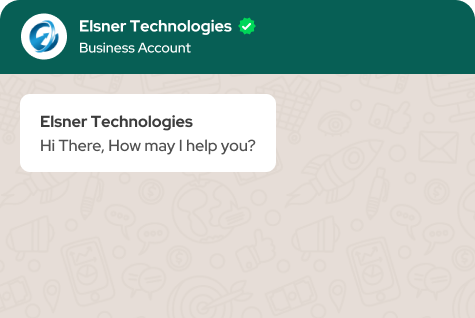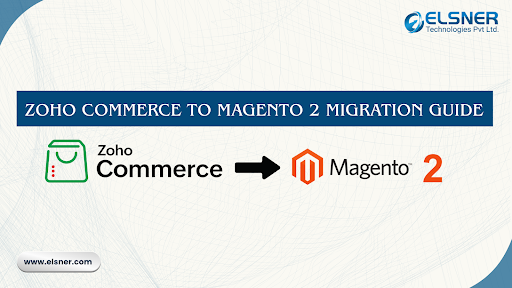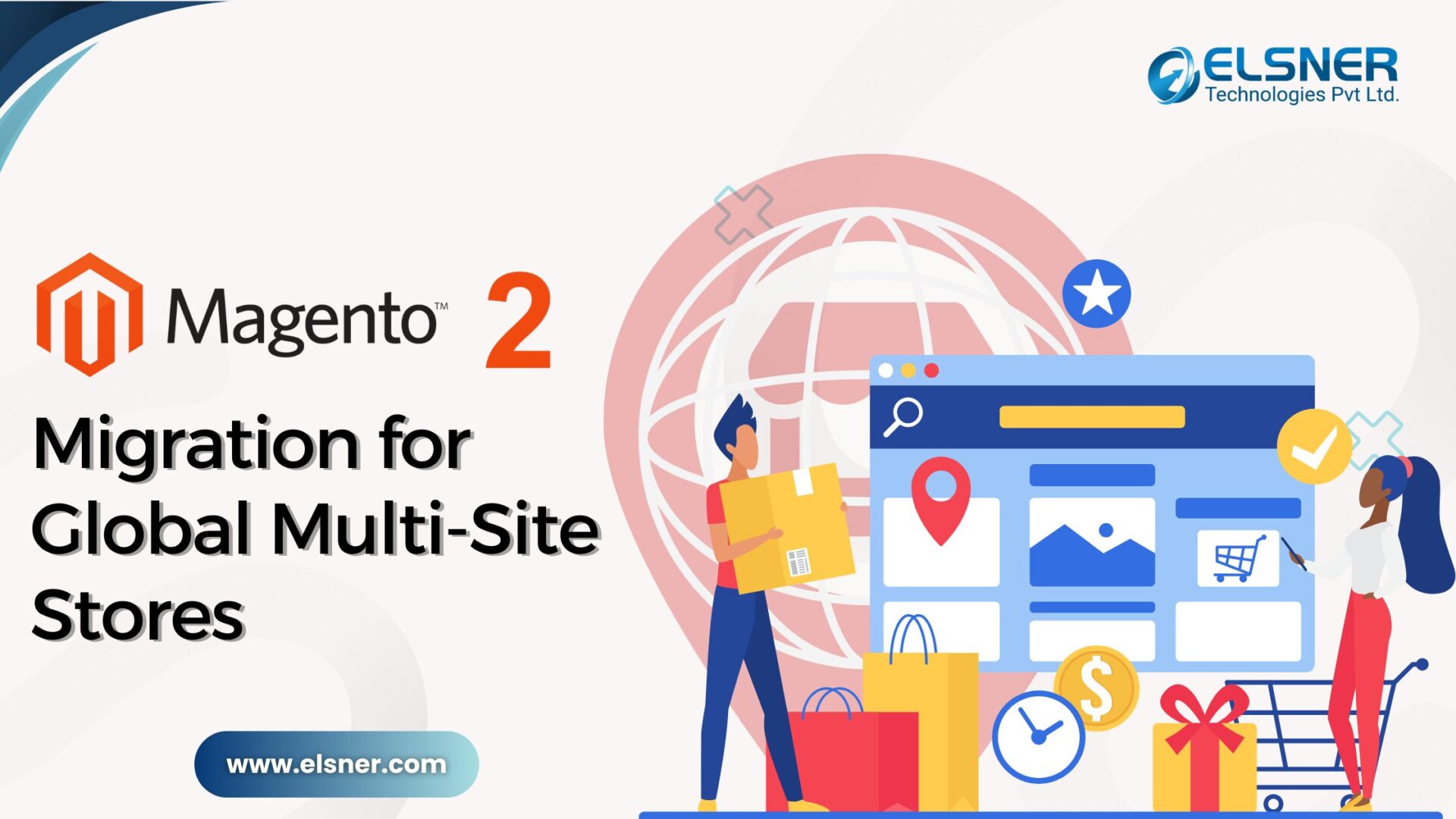- Why Migrate eCommerce Store from Zoho to Magento?
- You Can Actually Scale
- Real Customization vs. Surface Changes
- SEO That Goes Beyond Basic Settings
- Extensions That Solve Real Problems
- B2B Commerce Actually Works
- Where Zoho Commerce Hits the Wall?
- Critical Preparation To Migrate Ecommerce Store From Zoho To Magento
- Back Up Everything (Seriously, Everything)
- Map Your SEO Landscape
- Audit Current Integrations
- Choose Hosting That Matches Ambition
- Get a Free Migration Consultation
- The Magento eCommerce Migration Process: What Actually Happens
- Phase 1: Export Zoho Commerce Data
- Phase 2: Build Magento Environment
- Phase 3: Import Data Systematically
- Phase 4: Design and Theme Setup
- Phase 5: Connect Extensions and Systems
- Phase 6: Testing That Actually Catches Problems
- Phase 7: Launch and Watch Closely
- Protecting SEO During Zoho Commerce Migration To Magento Platform
- Common Challenges During Zoho to Magento Migration
- Wrapping Up: Making the Call
- FAQs
- How long does the entire migration take from start to finish?
- Will traffic and sales tank during migration?
- What’s the realistic budget for this project?
- Can customer passwords migrate over intact?
- What happens to Zoho-specific integrations after switching?
Zoho Commerce handles basic eCommerce needs well enough. It’s especially convenient if you’re already using other Zoho products. Everything connects easily. The learning curve isn’t steep.
But here’s the thing—convenience has limits. Once you hit a certain size, those limits become obvious. That’s when businesses start exploring Zoho Commerce to Magento migration options. The open-source architecture means developers can build practically anything.
If you’re planning to migrate an eCommerce store from Zoho to Magento, this guide explains every step. It’s also a valuable step-by-step Zoho Commerce to Magento migration guide that shows how to scale efficiently with Magento.
Why Migrate eCommerce Store from Zoho to Magento?
You Can Actually Scale
Try handling a Black Friday traffic spike with 5,000 simultaneous visitors. Magento was built for these scenarios. The architecture handles large catalogs without breaking a sweat. Traffic surges? The platform distributes load efficiently across servers.
That’s why many brands migrate from Zoho Commerce to Magento with help from a Magento migration company for Zoho stores — ensuring smooth scalability and reliability.
Real Customization vs. Surface Changes
Zoho Commerce lets you change colors and move a few elements around. Magento gives developers access to everything. Core functionality, checkout flows, product displays, backend processes—all customizable. If you can imagine it, a skilled developer can build it.
Businesses looking for Zoho Commerce migration to Magento platform or Zoho Commerce migration services often do so because they outgrow surface-level customization.
Working with a Magento development company allows you to achieve deeper customization and functionality that Zoho Commerce can’t support.
SEO That Goes Beyond Basic Settings
Both platforms offer meta tags and XML sitemaps. But SEO runs deeper than that.
Magento provides:
- Complete URL structure control
- Canonical tag management
- Rich snippets and schema markup
- Automatic image optimization options
- Advanced breadcrumb configuration
- Multi-store SEO management
Marketing teams actually get to do their jobs instead of fighting platform restrictions. Plus, if you plan to preserve SEO during Zoho Commerce to Magento migration, this flexibility ensures rankings remain stable.
Extensions That Solve Real Problems
The Magento marketplace contains over 5,000 extensions. Need abandoned cart recovery? There are 20 extensions for that. Want advanced analytics? Choose from dozens. Looking for a specific payment gateway used in your target market? Probably supported.
Zoho Commerce offers a fraction of these options. And most integrations outside the Zoho ecosystem require custom development. Migrating to Magento opens up access to the wider Magento eCommerce migration ecosystem.
For those comparing Zoho Commerce vs Magento, the difference in flexibility and ecosystem size is dramatic.
B2B Commerce Actually Works
Selling to businesses requires specific features:
- Quote management and approval workflows
- Customer-specific pricing and catalogs
- Purchase order support
- Credit limit management
- Multi-user accounts with different permissions
Magento handles all of this natively, unlike Zoho Commerce.That’s why enterprises often consult Magento 2 migration experts or look for the best Magento migration company for Zoho users to get proper B2B features configured during migration.
Where Zoho Commerce Hits the Wall?
|
Limitation |
Impact on Business |
When It Becomes Critical |
|
Closed architecture |
Can’t build custom features |
When standard features don’t match business processes |
|
Performance degradation |
Slow load times, poor UX |
Above 5,000 products or 1,000+ daily visitors |
|
Limited integrations |
Manual processes, data silos |
When adding marketing automation or ERP systems |
|
Basic B2B features |
Lost enterprise customers |
When expanding to wholesale or corporate sales |
Small businesses won’t hit these walls immediately. Give it 18-24 months of growth. Then the problems start showing up — and that’s when many begin researching Zoho Commerce alternatives and decide how to migrate Zoho Commerce stores to Magento with professional help.
Critical Preparation To Migrate Ecommerce Store From Zoho To Magento
Proper preparation prevents catastrophic mistakes when you migrate from Zoho Commerce to Magento. Here’s a detailed Zoho Commerce to Magento migration checklist.
Back Up Everything (Seriously, Everything)
- Export product catalogs with all attributes
- Download customer data, including purchase history
- Save order records with status and payment info
- Archive content pages and blog posts
- Screenshot the current site structure and layouts
Store these backups in three different locations.
Map Your SEO Landscape
Document every URL that ranks. Check Google Search Console for top-performing pages. Note which products drive organic traffic.
Create a spreadsheet:
- Old URL
- New URL equivalent
- Current ranking keywords
- Monthly traffic
- Priority level
A strong redirect map helps preserve SEO during the Zoho Commerce to Magento migration and prevents major ranking losses.
Audit Current Integrations
List everything connected to your Zoho store:
- Payment gateways
- Shipping calculators
- Email marketing platforms
- CRM systems
- Analytics tools
- Review platforms
- Live chat software
Research Magento equivalents for each. Some will port over easily. Others require replacement. Budget accordingly.
If you’re unsure where to start, consider a Magento migration company for Zoho stores with proven experience. They can identify integration gaps and recommend reliable Magento store setup solutions.
Choose Hosting That Matches Ambition
Cheap shared hosting kills Magento performance. The platform needs proper resources.
Options include:
- Managed Magento hosting (easiest, most expensive)
- Cloud infrastructure (AWS, Google Cloud, Azure)
- Dedicated servers (full control, requires expertise)
Don’t cheap out here. Server performance directly impacts sales conversions. If you’re not sure which to choose, work with a Magento development company to optimize server configuration and caching strategy.
Get a Free Migration Consultation
Talk to our Magento migration specialists and discover how we can help you upgrade from Zoho Commerce to Magento 2 seamlessly and securely.
The Magento eCommerce Migration Process: What Actually Happens
Here’s a step-by-step Zoho Commerce to Magento migration guide.
Phase 1: Export Zoho Commerce Data
Zoho Commerce uses specific data structures. CSV exports often contain formatting quirks. Product attributes might not map cleanly to Magento’s system. Customer passwords use a different encryption.
Start with a small test export. Maybe 50 products and 20 customers. Try importing these into a Magento test environment. See what breaks.
Fix the data issues now. Don’t wait until you’re migrating 10,000 products. For accurate data migration from Zoho Commerce, professional assistance saves countless hours.
Phase 2: Build Magento Environment
A fresh Magento installation goes on staging servers first. Configure basic settings:
- Store name and contact details
- Tax rates and rules
- Shipping zones and methods
- Currency options
- Customer groups
This is also when you set up Magento Development Services if needed. Complex configurations benefit from expert hands.
If you’re planning large-scale operations or enterprise-level functionality, consider investing in Magento Enterprise Development to unlock advanced capabilities.
Phase 3: Import Data Systematically
Don’t dump everything at once. Import happens in stages:
- Categories and attributes first
- Products second (with images)
- Customers third
- Historical orders last
Each stage gets tested before moving to the next. A product import error affects everything that follows. Catch problems early.
Automated migration tools speed this up significantly. They also reduce human error in data mapping. Consider them an investment, not an expense, especially if you’re performing a Zoho Commerce to Magento migration at scale.
Phase 4: Design and Theme Setup
Store appearance matters more than you think. Shoppers judge credibility in milliseconds.
Two approaches work:
- Use premium themes: Faster deployment, lower cost, slightly less unique
- Custom development: Perfect brand match, higher cost, longer timeline
Either way, mobile responsiveness isn’t optional anymore. Over 60% of eCommerce traffic comes from phones. Your theme needs to work perfectly on 4-inch screens.
This is where a Magento development company can tailor your design while maintaining performance and brand consistency.
Phase 5: Connect Extensions and Systems
Extension installation follows a specific order:
- Core functionality (payment, shipping)
- Marketing tools (email, analytics)
- Customer experience (reviews, wishlist)
- Advanced features (recommendations, search)
Test after each installation. Extension conflicts cause weird bugs that take hours to diagnose. Catching them early saves sanity.
Many merchants migrating from Zoho find this step challenging because of limited extension support. That’s why Zoho Commerce to Magento 2 migration projects often rely on Magento 2 migration experts to ensure smooth compatibility.
Phase 6: Testing That Actually Catches Problems
Thorough testing prevents launch disasters.
Functional Testing:
- Complete checkout process with different payment methods
- Apply discount codes and gift cards
- Test registration and login
- Verify email notifications at every step
- Try different shipping options
Performance Testing:
- Measure page load speeds on 3G connections
- Test with 100+ simultaneous users
- Check mobile loading times
- Monitor database query performance
SEO Testing:
- Verify meta tags on all page types
- Check XML sitemap generation
- Test robots.txt configuration
- Validate structured data markup
Cross-Browser Testing:
- Chrome, Firefox, Safari, Edge
- iOS Safari and Android Chrome
- Tablet landscape and portrait modes
Issues found now cost nothing to fix. Issues found after launch cost revenue. For merchants seeking Zoho to Magento migration services, this testing stage determines long-term stability and ROI.
Phase 7: Launch and Watch Closely
Pick launch timing carefully. Tuesday morning beats Friday evening. Low traffic windows give you breathing room if problems emerge.
Go-live checklist:
- Final data sync from Zoho Commerce
- Switch DNS to point at Magento
- Implement all 301 redirects
- Submit the new sitemap to Google
- Enable monitoring and alerts
Keep the old Zoho store accessible for 48 hours. Just in case something happens, you can roll back.
Monitor these metrics obsessively:
- Error rates in server logs
- Conversion funnel drop-off points
- Page load times
- Mobile vs desktop performance
- Payment gateway success rates
Successful execution delivers the full benefits of migrating from Zoho Commerce to Magento, minimizing downtime and maximizing early ROI.
Protecting SEO During Zoho Commerce Migration To Magento Platform
Nothing feels worse than losing your Google rankings after switching platforms. Luckily, that’s preventable with the right SEO strategy.
Before launching your Magento store, ensure you:
- Map all old URLs from Zoho Commerce to their new Magento equivalents.
- Apply 301 redirects carefully to preserve link equity.
- Migrate metadata (titles, descriptions, and alt texts) accurately.
- Submit a new sitemap to Google Search Console to help Google index your new
- Use canonical tags. This prevents duplicate content issues.
Working with an expert in SEO-friendly Zoho Commerce to Magento migration ensures your store doesn’t lose visibility during the transition. This step is critical if your Zoho store already ranks well and drives consistent organic traffic.
Many brands also combine this step with a Magento SEO audit and site speed optimization, which can actually boost your rankings post-migration.
Common Challenges During Zoho to Magento Migration
Even with a skilled team, challenges can arise during a Zoho Commerce to Magento 2 migration. Some common ones include:
- Data mismatches between platforms
- Incomplete redirect mapping
- Theme or plugin incompatibilities
- Downtime due to improper cutover planning
The good news? Each of these can be mitigated with planning and expertise. By choosing the best Magento 2 migration experts, you ensure these pitfalls are handled proactively.
Why Partner With a Professional Magento Agency?
Yes, you can try to migrate manually—but should you?
A professional Magento development company doesn’t just copy data; they build a strategy for sustainable growth. They:
- Conduct pre-migration audits
- Custom-map data for 100% accuracy
- Redesign your storefront for conversion
- Maintain SEO continuity
- Offer ongoing support after launch.
For businesses looking to expand globally, integrating Magento Enterprise Development adds even more scalability, multi-store management, and advanced analytics capabilities.
If you’re serious about scaling your eCommerce business, professional Zoho to Magento migration services aren’t an expense—they’re an investment.
Magento Enterprise Development capabilities open up enterprise opportunities. Wholesale programs, multi-brand management, international expansion—infrastructure supports ambition instead of constraining it.
Wrapping Up: Making the Call
This guide walks through the entire Zoho to Magento migration services process.
Whether you’re a growing retailer or an established enterprise, the transition requires expert guidance, precise data handling, and technical excellence. Working with a Magento migration agency ensures every part of your migration—data, design, SEO, and functionality—comes together flawlessly.
If you’re ready to take the next step, connect with certified Magento 2 migration experts today and experience a seamless transition from Zoho Commerce to Magento that enhances your performance and profits.
Hire Dedicated Magento Developers today!
FAQs
How long does the entire migration take from start to finish?
Small stores move faster. 4-6 weeks for stores under 1,000 products with minimal customization. Medium-sized stores need 8-10 weeks. Enterprise stores with complex requirements? Budget 12-16 weeks minimum for a Zoho Commerce to Magento migration.
The timeline depends on several factors. Product catalog size matters. Custom feature requirements add time. Design complexity affects the schedule. Available resources (internal team and external partners) impact speed during a Zoho Commerce to Magento 2 migration.
For best results, work with a Magento migration company experienced in handling complex Zoho to Magento data migration projects.
Will traffic and sales tank during migration?
Properly executed Zoho Commerce to Magento migration services maintain 95%+ of traffic and sales. Small dips happen temporarily. Rankings might fluctuate for 2-3 weeks. Conversions sometimes drop slightly until customers adjust to the new interface.
The difference between these outcomes is planning and execution quality. Comprehensive redirects, thorough testing, and experienced oversight by a Magento 2 migration expert prevent disasters during the Zoho Commerce migration to Magento platform.
What’s the realistic budget for this project?
Wide range depending on store complexity:
- Small stores (under 1,000 products, basic features): $5,000–$15,000
- Medium stores (1,000–10,000 products, moderate customization): $15,000–$40,000
- Large stores (10,000+ products, extensive custom work): $40,000–$100,000+
These numbers include Zoho Commerce to Magento migration essentials such as data migration, theme setup, extension configuration, testing, and launch support. Custom design or features add to base costs.
Before you hire dedicated Magento developers, get detailed quotes from multiple Magento development companies. Compare what’s included. Cheap quotes often exclude critical services like SEO mapping or Magento Enterprise Development setup. Expensive quotes should justify their premium with experience and guarantees.
Can customer passwords migrate over intact?
Technical challenge here. Zoho Commerce encrypts passwords one-way. Magento uses a different encryption. Direct password migration isn’t possible in most cases during a Zoho to Magento migration.
Two approaches work:
- Force password resets: All customers must reset passwords on first login. Most secure approach.
- Temporary token system: Send secure login links via email. Customers set new passwords through these links.
Customers won’t love this. But security requires proper password handling. Clear communication during your Zoho Commerce to Magento migration process helps minimize frustration.
What happens to Zoho-specific integrations after switching?
Zoho CRM, Zoho Books, Zoho Inventory—these integrate seamlessly with Zoho Commerce. They won’t integrate automatically with Magento after a Zoho Commerce to Magento 2 migration.
Options include:
- Middleware platforms: Zapier or similar tools can bridge connections
- Custom API development: Build direct integrations between systems
- Alternative platforms: Switch to tools with native Magento integration
Some connections cost more to rebuild than others. Factor this into Zoho Commerce to Magento migration ROI calculations. Working with a Magento migration agency can help streamline this stage for smoother interoperability.

About Author
Dipak Patil - Delivery Head & Partner Manager
Dipak is known for his ability to seamlessly manage and deliver top-notch projects. With a strong emphasis on quality and customer satisfaction, he has built a reputation for fostering strong client relationships. His leadership and dedication have been instrumental in guiding teams towards success, ensuring timely and effective delivery of services.




